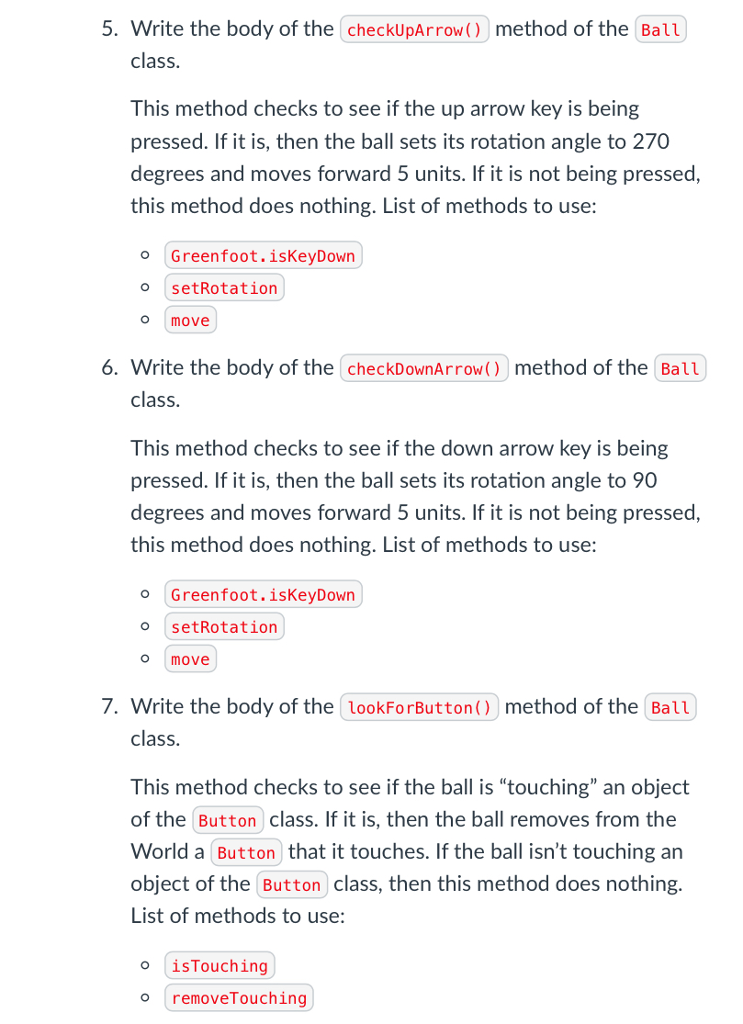
- #Greenfoot code examples how to
- #Greenfoot code examples full
- #Greenfoot code examples software
- #Greenfoot code examples download
- #Greenfoot code examples free
It will allow you to practice Passing Parameters, Creating Custom Images, and creatin.
#Greenfoot code examples full
Companion to the 19th Annual ACM SIGPLAN Conference on Object-oriented Programming Systems, Languages, and Applications (OOPSLA). This is the 3rd video in my Greenfoot Full Course. "greenfoot: Combining Object Visualisation with Interaction" (PDF).

class ) if ( a != null ) : CS1 maint: DOI inactive as of February 2022 ( link) Its most notable difference is the use of a frame-based editor.Īctor a = getOneIntersectingObject ( Asteroid.

Stride is intended to make programming easier for novices, support younger users, and facilitate the transition from block-based languages. In 2017, Greenfoot was extended to support a second programming language, Stride (in addition to Java). In August 2009, a textbook was published that teaches programming with Greenfoot.
#Greenfoot code examples free
In March 2009, Greenfoot project became free and open source software, and licensed under GPL-2.0-or-later with the Classpath exception. To make an actor move to the left when the left arrow key is pressed, the fol- lowing code can be added to the actors act() method: if ( Greenfoot. In May 2007, the Greenfoot project was awarded the "Duke's Choice Award" in the category "Java Technology in Education", and in 2010 it won the "Premier Award for Excellence in Engineering Education Courseware". You will see a Greenfoot project that looks as. Browse to the Greenfoot directory and open scenarios, and select wombats. To open the sample Greenfoot project, do Scenario->Open. Every time a user clicks the 'Act' button on screen, the 'act' method of each object in the world will be called. In this lesson, we will test the water by looking at a sample Greenfoot project called wombats. The first full release, Greenfoot version 1.0, was published on, with further releases following occasionally thereafter. The 'Lander' class in the 'lunarlander' scenario (from the Greenfoot sample scenarios) shows another example of using this method. Greenfoot is being developed and maintained at King's College London, where the development team moved from the University of Kent. Greenfoot uses simulations and games to teach object-oriented concepts and principles in a fun, easily accessible manner.
#Greenfoot code examples how to
The Bounce method tells the actor how to bounce.
#Greenfoot code examples software
Students should bring a laptop computers to class, with the Greenfoot software and Java development kit (JDK) installed as described at. Look at this sample to see how to insert in properly : Girl program. During the workshop, attendees will be introduced to Greenfoot and Java programming, view and run sample programs, and write Java code to add functionality and create new programs. The name of the class would still be ‘Leaf’.
#Greenfoot code examples download
From 2005 development was continued involving the other members of the BlueJ Group. Download a new Greenfoot world here: MazeWorld. Selecting a new image for a class in Greenfoot Then select the new image, for example a grass-like image. If (x >= myWorld.getWidth() || y >= myWorld.The Greenfoot project was initiated by Michael Kölling in 2003, and a first prototype was built by Poul Henriksen ( master's student) and Michael Kölling ( supervisor) in 2003/2004. ("Number of steps from move() method " + numberOfStepsTaken)


* Move one cell forward in the current direction. Check whether there is a leaf in the same cell as we are.Īctor leaf = getOneObjectAtOffset(0, 0, Leaf.class) A Wombat moves forward until it can't do so anymore, at Greenfoot is an environment for teaching Java programming with the focus on. Import greenfoot.* // (World, Actor, GreenfootImage, and Greenfoot) The source code of all examples is included in the JDroidLib distribution. Then put a new wombat on the stage and run the program. Copy all of the code from the text area below into your Wombat class. In the text area below is all of the code for the "modified" Wombat Class. Here is some code that I added to the move() method. You then see code similar to the picture below.įind the move() method in your wombat class. Right-click over the Wombat Icon and choose "Open editor". Part II A closer look at the Wombat Class's Code Below is the code for the Wombat class.


 0 kommentar(er)
0 kommentar(er)
